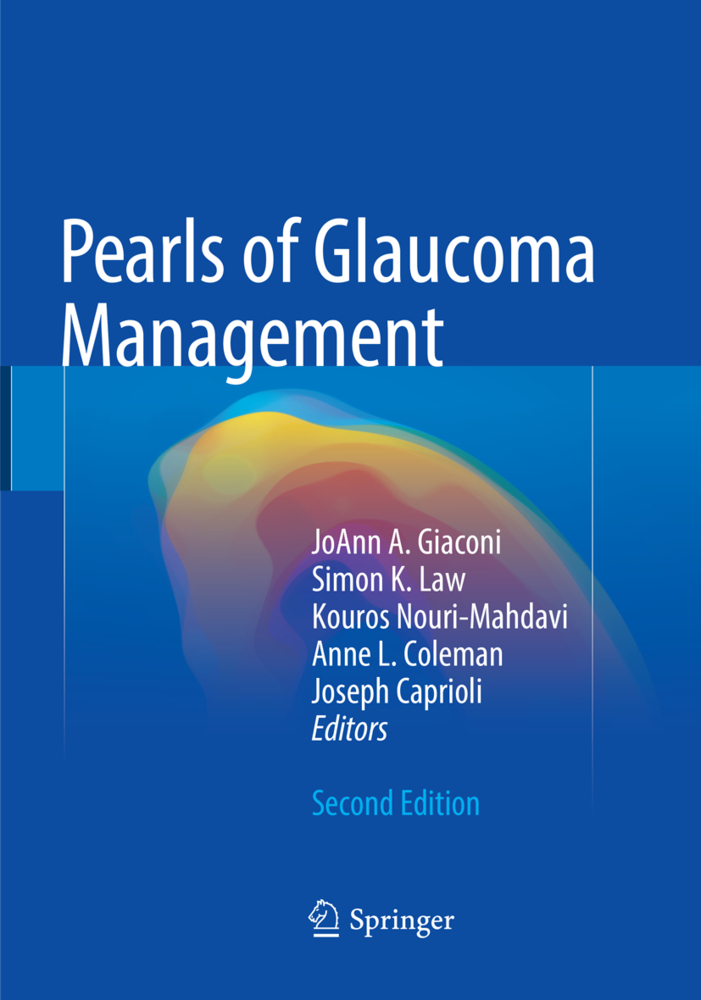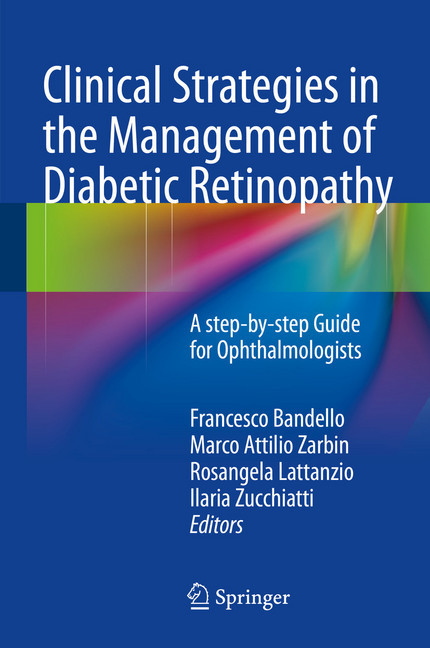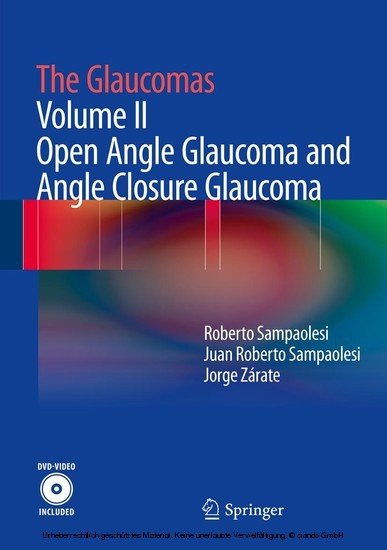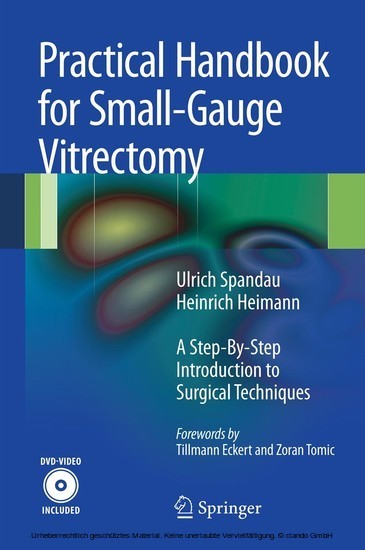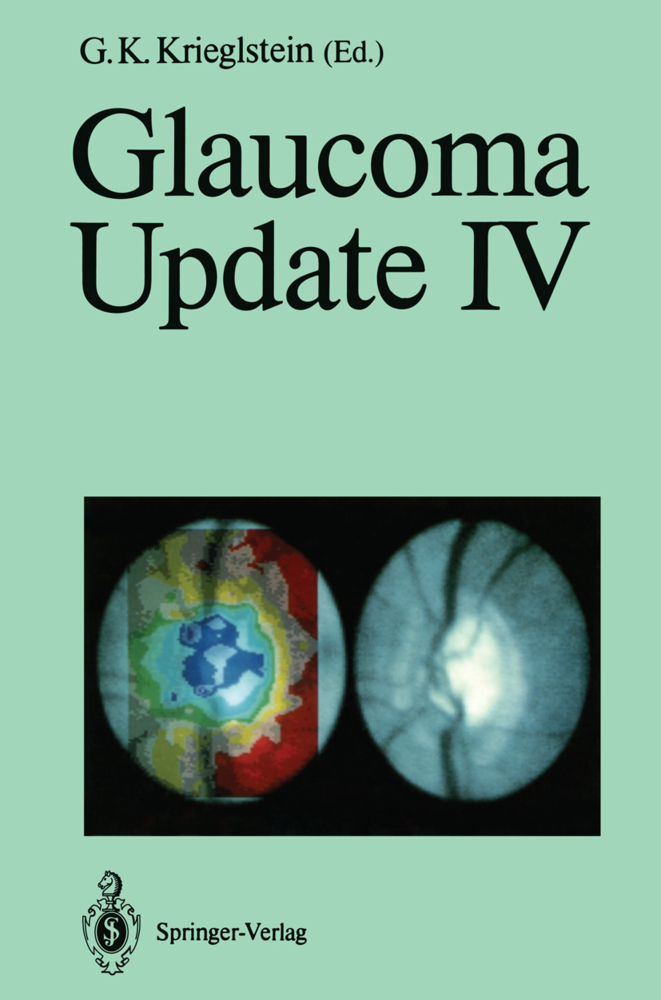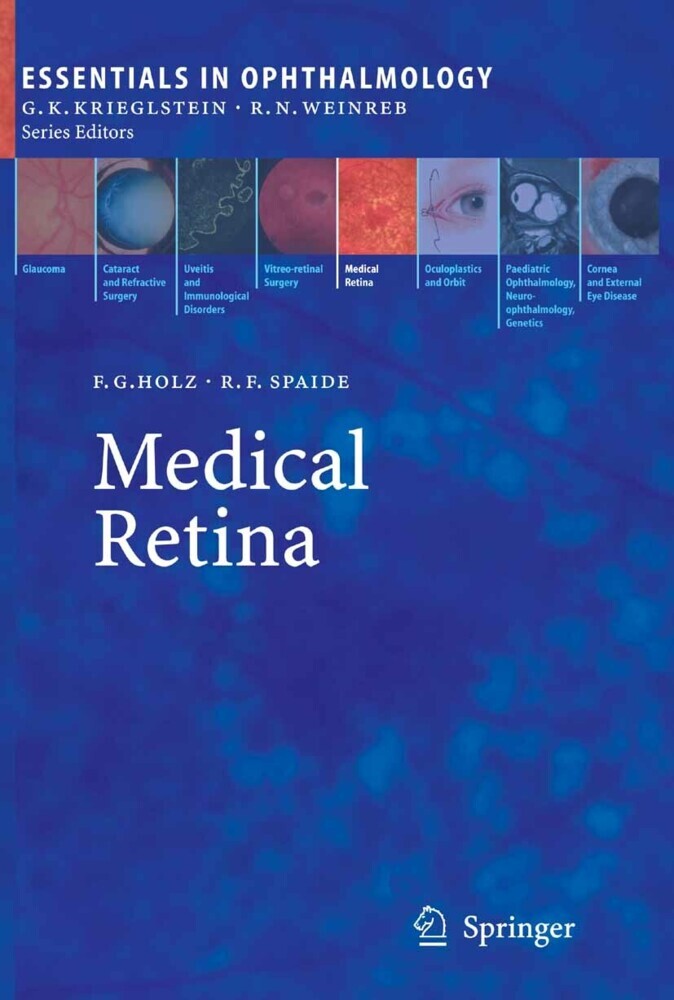Pearls of Glaucoma Management
This concise and comprehensive guide is written by international experts of the field who are familiar with the world s literature. Based on the world s literature and their own experience, authors state and explain how they prefer to manage patients and problems clinically. Each chapter author gives the reader numerous clear and specific tips and pearls for the diagnosis and management of Glaucoma. The reader-friendly structure of this lavishly illustrated 4-colour book ensures that the necessary information is quickly found and remembered. This book ensures a pleasant learning experience on Glaucoma management with the goal of an improved treatment outcome.
1;Foreword;5 2;Preface;7 3;Contents;8 4;Contributors;22 5;Optic Nerve: The Glaucomatous Optic Nerve;31 5.1;1.1 Why is the Optic Nerve Important in the Diagnosis and Management of Glaucoma?;31 5.1.1;1.1.1 The Optic Nerve Head (ONH) is the Principal Site of Glaucomatous Damage to the Visual System;31 5.1.2;1.1.2 The Pathophysiology of Glaucomatous Damage is Separate from the Clinical Phenomenon of "Cupping";33 5.1.3;1.1.3 The Clinical Appearance and Behavior of the ONH Holds Clues as to the Etiology of a Given Optic Neuropathy;36 5.1.4;1.1.4 The Aged ONH Holds Important Clues About Susceptibility;37 5.1.5;1.1.5 How Age Influences the Susceptibility and Clinical Behavior of the ONH;37 5.1.6;1.1.6 Apart from the Aged ONH, Are There Some Nerves That are Mechanically More Sensitive to Damage?;39 5.2;Summary for the Clinician;39 6;Optic Nerve: Clinical Examination;44 6.1;2.1 How Should I Examine the Optic Nerve?;44 6.2;Summary for the Clinician;45 6.3;2.2 How Does One Establish the Borders of the Nerve and Follow the Neuroretinal Rim Contour?;46 6.4;Summary for the Clinician;46 6.5;2.3 How Does One Avoid Misinterpreting Rim Loss?;46 6.6;Summary for the Clinician;47 6.7;2.4 How Much Asymmetry Between Neuroretinal Rims and Nerves Is Important?;47 6.8;Summary for the Clinician;47 6.9;2.5 How Can I Estimate Disc Size and Compare Disc Size Between the Two Eyes?;47 6.10;Summary for the Clinician;48 6.11;2.6 How Quickly Can I Expect Optic Nerve Change to Occur?;48 6.12;Summary for the Clinician;48 6.13;2.7 If I See a Disc Hemorrhage on Healthy Appearing Neuroretinal Rim, How Soon Can I Expect to See a Change in the Rim?;48 6.14;Summary for the Clinician;49 7;Optic Nerve: Heidelberg Retinal Tomography;51 7.1;3.1 What Indices Should I Use to Help Me Interpret the Heidelberg Retinal Tomograph (HRT) Printout?;51 7.2;Summary for the Clinician;55 7.3;3.2 How Big a Change is Meaningful in the Numbers on an HRT Printout?;56 7.4;Summary for the Clinician;57 7.5;3.3 How Does the HRT Detect Progression?;57 7.5.1;3.3.1 Trend Analysis;57 7.5.2;3.3.2 Topographical Change Analysis (TCA);58 7.6;Summary for the Clinician;61 7.7;3.4 Can I Use the HRT Clinically to Diagnose Glaucoma and Glaucomatous Progression? How Certain Can I Be that the Progressio;61 7.8;Summary for the Clinician;62 8;Optic Nerve: Scanning Laser Polarimetry;63 8.1;4.1 What is the Physical Principle Behind Scanning Laser Polarimetry (SLP)?;63 8.1.1;4.1.1 How has Scanning Laser Polarimetry Evolved?;63 8.1.2;4.1.2 What is GDxVCC (Variable Corneal Compensation)?;64 8.1.3;4.1.3 What is GDxECC (Enhanced Corneal Compensation)?;64 8.2;Summary for the Clinician;64 8.3;4.2 How is Image Quality and Artifact Assessed on the GDxVCC Printout?;65 8.4;Summary for the Clinician;66 8.5;4.3 Can I Use the Scanning Laser Polarimetry Report to Diagnose Glaucoma?;66 8.6;Summary for the Clinician;68 8.7;4.4 Can I Use Scanning Laser Polarimetry to Assess Progression of Optic Nerve Damage?;68 8.7.1;4.4.1 Detection of Progression with SLP;68 8.8;Summary for the Clinician;69 9;Optic Nerve: Optical Coherence Tomography;72 9.1;5.1 What Indices Should I Use to Help Me Interpret the OCT Optic Nerve Head Analysis Report?;72 9.2;Summary for the Clinician;75 9.3;5.2 What Indices Should I Use to Help Me Interpret the "RNFL Thickness Average Analysis Report" Printout?;75 9.4;Summary for the Clinician;76 9.5;5.3 Can OCT Detect Progression? How Big a Change is Meaningful in the Numbers on an OCT Printout?;76 9.6;Summary for the Clinician;78 9.7;5.4 Can I Use OCT Clinically to Diagnose Glaucoma? How Certain Can I Be that the Diagnosis is Real?;78 9.8;Summary for the Clinician;79 9.9;5.5 Should I Incorporate Spectral Domain-OCT into My Practice?;79 9.10;Summary for the Clinician;80 10;Optic Nerve: Comparison of Technologies;81 10.1;6.1 Why Image the Optic Nerve?;81 10.1.1;6.1.1 Confocal Scanning Laser Ophthalmoscope;81 10.1.2;6.1.2 Optical Coherence Tomography (OCT);83 10.1.3;6.1.3 Scanning Laser Polarimetry (SLP);85 10.2;Summa
Giaconi, JoAnn A.
Law, Simon K.
Caprioli, Joseph
| ISBN | 9783540682400 |
|---|---|
| Artikelnummer | 9783540682400 |
| Medientyp | E-Book - PDF |
| Auflage | 2. Aufl. |
| Copyrightjahr | 2010 |
| Verlag | Springer-Verlag |
| Umfang | 498 Seiten |
| Sprache | Englisch |
| Kopierschutz | Digitales Wasserzeichen |


